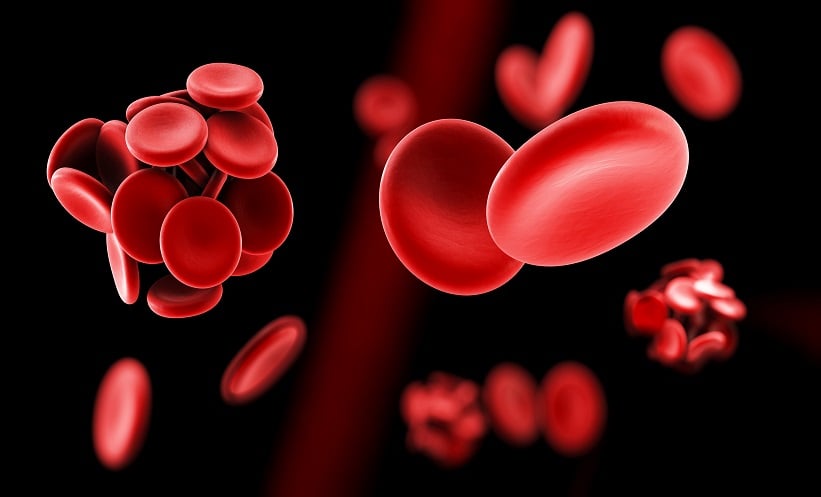Lydia Scarfò | Assistant Professor, Università Vita-Salute San Raffaele, Milan, Italy
Physician Scientist, B-cell Neoplasia Unit, IRCCS Ospedale San Raffaele, Milan, Italy
Citation: EMJ Hematol. 2025;13[1]:82-84. https://doi.org/10.33590/emjhematol/DNJB6243
![]()
Reflecting on the recent European Hematology Association (EHA) Congress, what do you consider the most impactful takeaways for the chronic lymphocytic leukaemia (CLL) community this year?
This year, the EHA Congress provided us with long-term follow-up of some very interesting study, including the GAIA/CLL13 trial, where they updated the progression-free survival (PFS) of different cohorts. It seems that, especially in patients carrying unmutated IGHV genes, the triplet combination of ibrutinib, venetoclax, and obinutuzumab, is associated with a prolonged PFS. As a reminder, the GAIA/CLL13 trial was focused on young, fit patients without TP53 aberrations, who were randomised 1:1:1:1 to: venetoclax plus obinutuzumab; or venetoclax plus obinutuzumab plus ibrutinib; or venetoclax plus rituximab; or FCR/BR. In general, chemo-free combinations proved to be superior to chemoimmunotherapy. Now, with prolonged follow-up, we can also see that using the three-drug combination, especially in patients at high risk, such as those carrying an unmutated IGHV genes, can prolong PFS.
Along similar lines, in patients treated with a fixed-duration combination of ibrutinib plus venetoclax in the CAPTIVATE study, we now have long-term data suggesting that at 5.5 years of follow-up, 60% have not relapsed, which is very reassuring. Among those who did relapse and were retreated with either ibrutinib alone or the combination of ibrutinib plus venetoclax, the overwhelming majority responded. Now, with longer follow-up data on retreatment (more than 2 years in those who were retreated with ibrutinib), we see >90% PFS at 2 years, and >96% overall survival (OS) at 2 years after restarting treatment with ibrutinib. This is highly encouraging and helps us to better manage our patients in clinical practice.
Importantly, we also received updated follow-up results of the FLAIR study, which was designed by UK colleagues using an adaptive design. At this meeting, they presented the comparison data on PFS and OS across three cohorts: patients treated with fludarabine, cyclophosphamide, and rituximab; patients treated with ibrutinib; and patients treated with ibrutinib plus venetoclax, based on a minimal residual disease-driven approach. With prolonged follow up, the UK team confirmed a PFS benefit for ibrutinib plus venetoclax, not only in comparison to chemoimmunotherapy, but also versus ibrutinib monotherapy. This benefit also translated into improved OS, which is a very impressive for the CLL community.
You recently presented these findings at EHA 2025. Could you walk us through the updated efficacy and safety findings of BGB-16673 in patients with relapsed or refractory CLL/small lymphocytic lymphoma, from the ongoing Phase I CaDAnCe-101 study?
We are actually improving the management of patients with CLL starting from first-line treatment, but we still have to face the issue of patients relapsing after initial treatment. In particular, there is an unmet need in patients who relapse on covalent Bruton tyrosine kinase (BTK) inhibitors or shortly after receiving combination treatment. And in the CaDAnCe-101 study, we enrolled patients with relapsed/refractory CLL. The vast majority had previously been exposed to a covalent BTK inhibitor. A relevant proportion, more than 80%, had also received venetoclax treatment, and about 18% had additionally been exposed to a non-covalent BTK inhibitor, generally pirtobrutinib. This represents a very heavily pretreated patient population. The median number of prior lines of therapy was four, and these patients were enriched for unfavourable disease features, like TP53 aberrations, unmutated IGHV genes, and complex karyotype (defined as three or more abnormalities). Almost 40% of patients carried BTK mutations. Thus, in this very difficult-to-treat population, BGB-16673 achieved a very high response rate. The study design is a Phase I/II, and the aim was to identify the recommended dose for expansion, which was established at 200 mg daily. If we analyse the whole cohort, the overall response rate (ORR) was more than 85%, with a complete response rate of 4.5%. Focusing on patients receiving the recommended dose for expansion of 200 mg daily, we observed an ORR of more than 93%. This response rate was consistent across different patient subgroups, including so-called triple-exposed patients, who have received a covalent BTK inhibitor, a B-cell lymphoma 2 (BCL-2) inhibitor, and non-covalent BTK inhibitor.
In terms of safety, since this is a Phase I study, the main focus was on tolerability. The study was the drug was very well tolerated, with no unexpected toxicities. The most frequent adverse events were fatigue, contusion, diarrhoea, and neutropenia, but these were all manageable. Regarding cardiovascular toxicity, given that the main target is BTK, we identified only two cases of atrial fibrillation and two major haemorrhages. Notably, no new major haemorrhages have been reported since the previous analysis presented in 2024. BGB-16673 acts via a completely different mechanism compared to other available drugs, since it does not inhibit BTK directly but instead tags BTK for degradation via the proteasomal pathway. This is showing very promising efficacy and is now being studied in Phase II and III trials.
Can you describe the methodology behind your qualitative study exploring the patient experience with continuous covalent BTK inhibitors in CLL?
So, in this study, we wanted to learn more about the patient experience with continuous covalent BTK inhibitors, because the information we currently have is derived from the physician assessment in clinical trials. We wanted to understand how patients tolerate these therapies and what impact they have on quality of life in everyday clinical practice. We focused not only on patient perceptions, but also on care partner perspectives, because this is also relevant in the CLL patient journey, as well as physician perspective. We wanted to compare the different viewpoints to better understand whether continuous BTK inhibitor treatment is associated with impaired quality of life, or if some covalent BTK inhibitors are better tolerated in everyday life and are compatible with continuous treatment, in line with the current prescribing schedules. So far, we are still recruiting patients. We did not achieve yet our recruitment goal, but we hope to present the results of the cumulative analysis at upcoming meetings.
In your view, what are the biggest challenges and opportunities currently facing clinicians and researchers working in the CLL field?
We have greatly improved the management of our patients, because we have shifted from a chemotherapy-based approach to a chemo-free approach. At the same time, we are now not only improving the symptoms and the quality of life of our patients with treatment, but we are actually improving their survival. Recently, the results of a cumulative analysis confirmed that patients treated with either ibrutinib as a single agent or in combination with venetoclax in the first line, have the same OS as the general population matched according to sex and age. This is a very relevant achievement in the CLL field, even though CLL remains incurable.
In the next future, I would say that our main focus will probably be on achieving a cure for CLL. We are not there yet, and to achieve this goal, we may need to go back to the bench. The greatest achievements of the last few years have been associated with a better understanding of the mechanisms leading to CLL onset, progression, and resistance to treatment. We now need to delve deeper to identify other potential targets that we can exploit in order to achieve deeper responses, and long-term disease control, and hopefully a cure.
Nowadays, in everyday clinical practice, the main issue concerns patients who have been previously exposed to both a covalent BTK inhibitor and a BCL-2 inhibitor, particularly those who are not only double-exposed but also double-refractory. In such cases, we have limited treatment options. We have recently acquired pirtobrutinib in Europe for patients previously exposed to a covalent BTK inhibitor but we still need to identify other targets and strategies, especially for young, fit patients, that will allow us to achieve long-term disease control.
Looking ahead to EHA 2025, what emerging themes or developments in CLL research are you most excited to see discussed?
I would say that we will learn more about BTK degraders. There are two BTK degraders in clinical development, BGB-16673 and NX-5948, and they are both very promising agents may be approved and used in clinical practice soon. For CLL, there are also novel BCL-2 inhibitors in development, such as lisaftoclax and sonrotoclax. In the next future, we will learn more about the results of these novel BCL-2 inhibitors. At the last EHA meeting, bispecifics and CAR-T cells were not the main topics of discussion. Thus, I hope that at the next EHA meeting, we will have updated results from larger cohorts on the use of bispecifics and CAR-T cells, both alone or in combination, in the treatment of patients with CLL.







